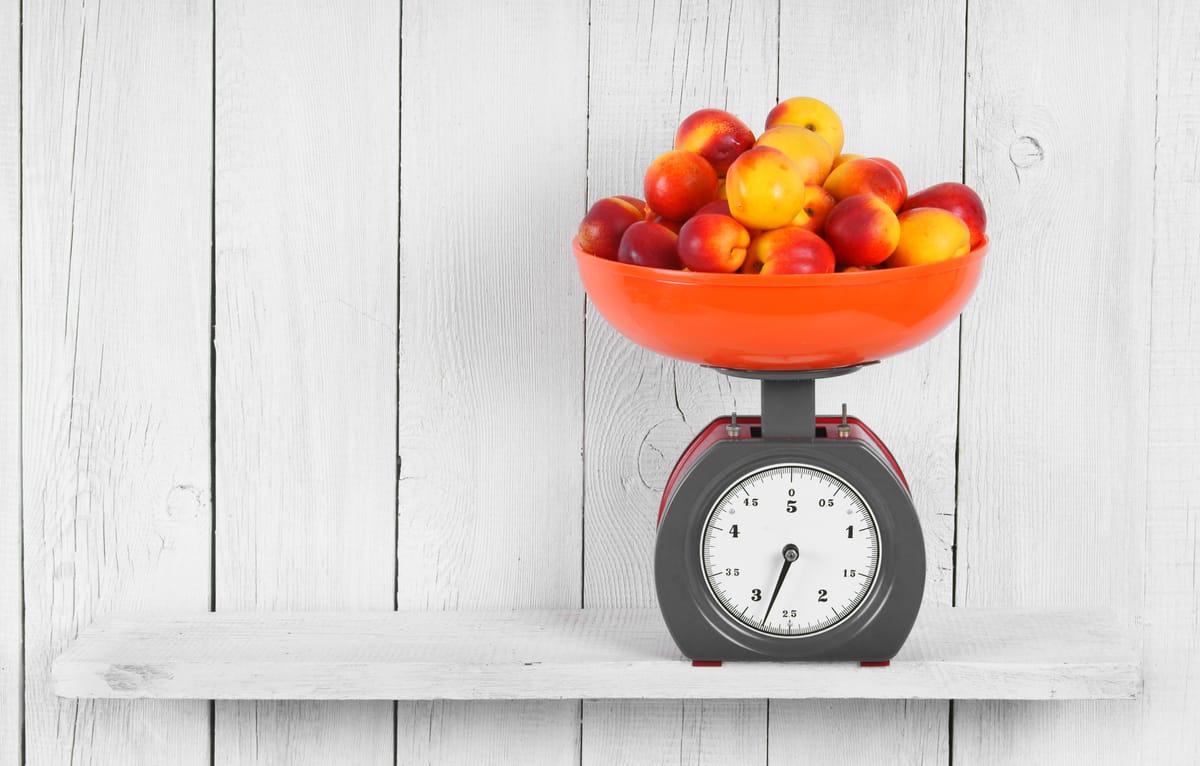Feel Overwhelmed By All The Choices In The Supermarket? You're Not Alone!
We've all been there - standing in the cereal aisle or produce section, scratching our heads and wondering which item to choose. With dozens of sizes, brands, and variations of the same product, the options seem endless. Our eyes bounce around from shelf to shelf as we debate which pack of pasta, box of cereal, or bottle of juice represents the best value.
The jumbo packs promise more for less, but are they really a bargain? Is it worth buying in bulk even if we don't need that much? The choices paralyze us and make even the simplest grocery shopping a tedious, overwhelming task. The struggle is real!
The Price Per Unit/Weight Label
You know that little tag on the shelf below each product that shows the overall price? Take a closer look next time you're browsing the supermarket aisles and you'll notice there's a secondary price shown - the price per unit or per weight.
This often overlooked number tells you the cost per a standardized measurement of the item, such as:
- Per liter for liquids like juice, soda, milk
- Per kilogram for fresh produce like fruits and vegetables
- Per 100 grams for packaged dry goods like pasta, rice, cereal
- Per unit for non-food items like tissues, diapers, soap
The unit varies based on the product category to allow standardized price comparisons across different brands and pack sizes.
So why is this price per unit/weight label so important? Keep reading to understand how comparing this way can lead to smarter shopping!
Why Compare Prices This Way?
Glancing at the price per unit or weight eliminates the size bias and reveals the true cost, making comparison shopping a breeze. When you see two pasta sauce jars - one 500g for $5 and one 1kg for $8 - your instinct may be to grab the bigger one since it seems like a better deal. But look closer at the price per 100g and you'll see the 500g jar is $1 per 100g while the 1kg jar is $0.80 per 100g. The smaller size is actually more expensive per unit! This method cuts through marketing tricks and lets you see what you're really paying per ounce, liter, kilogram etc. No more second guessing - the unit price transparently displays the value.
An Example
Let's take an example to see how comparing prices by unit or weight works in action.
Say you're looking to buy tomato pasta sauce. You spot two options:
- Option 1: 500g jar of sauce for $5
- Option 2: 1kg jar of sauce for $8
At first glance, the 1kg jar seems like a better deal - after all, you get double the amount of sauce for just $3 more.
But let's look at the unit pricing.
The 500g jar has a price per 100g of $1 ($5 divided by 500g).
The 1kg jar has a price per 100g of $0.80 ($8 divided by 1000g).
Aha! The unit price reveals that the smaller 500g jar is actually more expensive per 100g compared to the 1kg jar. Even though the 1kg jar is a bigger size, you get more sauce for your dollar.
So in this case, the 1kg jar of tomato sauce is the better bargain. Comparing the unit prices steered us away from the size bias.
Using this simple tactic changed our purchase decision and saved money. The power of price per unit!
Make It a Habit
Next time you go grocery shopping, get in the habit of glancing at the price per unit or weight label every time you evaluate a product. Make it part of your regular routine to compare prices this way, rather than relying only on the total or shelf price.
Train your eyes to spot that little number in the corner. Making this a consistent habit will ensure you are always armed with the insight to make smart buys. No more scratching your head wondering if something is a good deal or not!
Over time, you'll get so accustomed to this smart shopping method that you won't even have to think twice. Checking the unit price will become second nature. You'll be surprised at how much easier and less overwhelming your supermarket trips can be when you use this simple trick consistently.
So put in the effort upfront to make this a regular habit. With practice, you'll get faster at spotting the unit prices and comparing them. Before you know it, you'll be breezing through the aisles confidently, grabbing the best bargains based on true cost. Making smart shopping decisions will become your new superpower!
Shop Smarter
Comparing prices by unit or weight is more than just a handy shopping tip - it's a surefire way to shop smarter and maximize your savings. Here's why it pays to use this strategy:
- Saves you money - You'll be able to spot the true bargains and avoid getting tricked by sneaky pricing tactics. No more falling for false deals or buying overpriced items!
- Makes shopping faster - You won't waste time scratching your head and can quickly zero in on the best values. Grocery trips become faster and more efficient.
- Eliminates guesswork - Takes the confusion out of size-based pricing and makes it easy to compare apples to apples. No more guessing if the bigger size is actually cheaper!
- Prevents impulsive buys - Sticking to price per unit comparisons means you buy only what you need. Less temptation to throw in items that seem like a good deal but aren't.
- Works everywhere - Apply this strategy at any store that displays a unit or weight price. It's universally useful!
Using unit pricing as your guide is simply a smarter way to shop. You'll save money, time, and mental energy each time you pay attention to those tiny price labels. Shopping just got a whole lot easier!
Other Shopping Tips
Beyond just comparing prices per unit at the grocery store, there are plenty of other ways you can be a savvy shopper and save money in all aspects of your shopping. Here are some tips:
- Sign up for loyalty programs and rewards cards for stores you frequent often. These can help you earn points and discounts on future purchases. Just don't overspend just to earn rewards!
- Check for coupons and promo codes before you shop online. Search for codes on sites like RetailMeNot or Honey to find discounts you can apply at checkout.
- Follow your favorite brands and stores on social media. Many will offer exclusive promos and sales just for their followers that you can take advantage of.
- Shop seasonally whenever possible. Buy winter coats and boots during end-of-season sales or shop for swimsuits and sandals during the summer. The savings can be significant.
- Don't be afraid to negotiate, especially for big ticket items like furniture or appliances. Many retailers can work with you on the price or throw in free add-ons.
- Check resale shops and thrift stores for huge savings on gently used clothing, furniture, and more. You can often find premium brands for bargain prices.
- Wait for big sales like Black Friday and Cyber Monday to buy certain items. Set a deal alert so you know when prices drop on things you've had your eye on.
- See if there are any cash back apps or browser extensions that give you a percentage back on online purchases at your favorite retailers. It's free money!
Using tactics like these can help you keep more money in your wallet. And who doesn't want that?
Recap
Comparing prices by unit or weight provides several key benefits that can make your shopping experience easier and more cost effective:
- Eliminates size bias: Unit pricing allows you to compare the true cost of products no matter what the package size. A giant box isn't necessarily a better deal than a small one.
- Simplifies comparisons: You don't have to do the math yourself to figure out the per ounce or per pound cost. The unit price does the work for you instantly.
- Saves money: Knowing the true price difference between sizes and brands makes it easier to spot the real bargains. You can avoid overpaying simply because a product looks like a good deal.
- Saves time: Unit pricing takes the guesswork out of choosing between similar products so you can shop quickly and decisively. No more standing paralyzed in the aisle scratching your head!
- Builds smart shopping habits: Getting used to checking unit prices makes you a more informed, savvy shopper overall. You'll learn what reasonable prices look like for different items.
Using unit pricing consistently at the supermarket and other stores will make you feel more confident, get you in and out faster, and put extra savings into your pocket. It's a simple habit that pays big dividends!
Conclusion
You did it! You made it through this whole piece and are now armed with a brilliant hack to make your next shopping trip an absolute breeze. 🙌
The price per unit/weight comparison is truly a game-changer. No more standing paralyzed in the aisle, no more second-guessing - just quick and confident choices guided by the numbers before you. Give yourself a pat on the back!
Now get out there, put this tip to use, and start celebrating every shopping win and penny saved. You've got this! Each trip will get faster, every decision clearer.
Remember, knowledge is power. You now hold the key to smarter shopping. Your bank account thanks you, and your taste buds will too, when you apply your savings to life's little food luxuries. 😋
It's time to put those comparison skills to the test. Scan the labels, do the math, and may your cart be filled with the best bargains around. Happy shopping!


